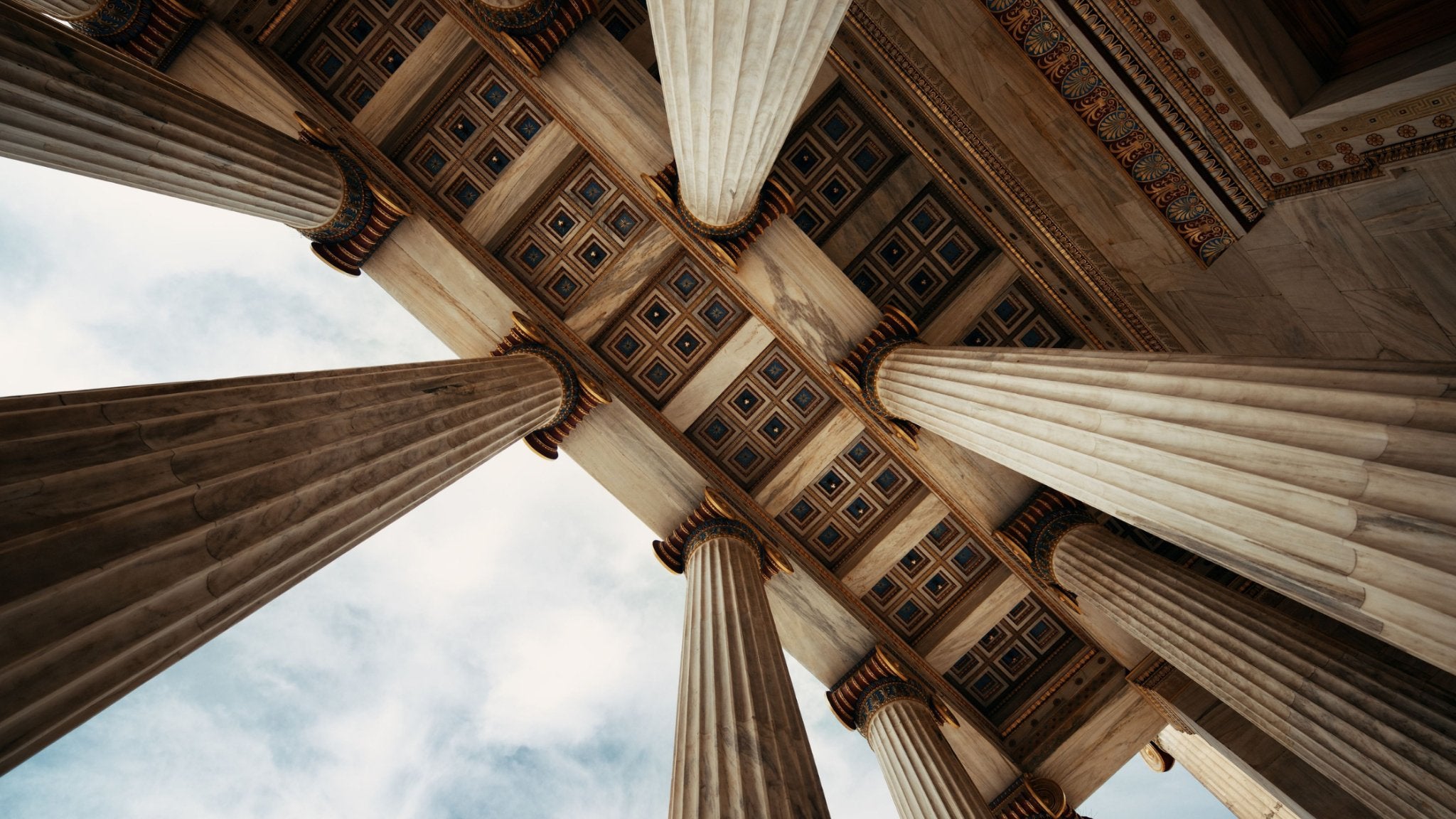Greek architecture is the perfect flowering of geometry. -Ralph Waldo Emerson
Just like Gaudi got ideas for his architecture in Spain from nature, the Greeks saw the beauty around them and recreated it in their buildings.
The monuments and temples built by the ancient Greeks display such a unique style, it’s been copied by many different cultures all over the world! Even the Romans took inspiration from ancient Greek architecture.
What's So Special About Greek Architecture?
Greek architecture is a testament to the builders and craftsmen of the day. These monuments were built ages ago, some as early as 600 BC.
Not all have remained intact through the centuries due to wars and natural disasters, but there are a couple which still stand and, in one case, are still used!
During the early phases of their grand construction, the Greek architects had a lot of influence from Egyptian architecture. Taking ideas from what they saw in Egypt, the builders added their style to create something entirely new.
The architecture the ancient Greeks created, in turn, was copied by the Romans.
Entrances to Greek buildings were grand and very ornate often featuring soaring columns. They had designs carved from stone, or marble in many cases.
Let's see how the styles of the columns changed over time.
The Different Styles of Greek Architecture
There are three main styles for the structures which were crafted by the ancient Greeks. The craftsmen called them orders.
Doric Order

This is the earliest and the simplest of the styles. It originated in the western Doric area of Greece.
The columns are simple and sturdy. They didn’t have a base. And their tops were plain.
The bases are larger than the tops. And they are kind of short. The height is only between four and eight times their diameter.
So, if the column is 2 feet wide, it’s only between 8 and 16 feet tall. You can find these types of columns in the Parthenon.
Their distinct style came from the horizontal beam at the top of the columns. It was carved with vertical grooves spaced at precise intervals. They made additions to the roofs, as well, to redirect the rain run-off.
Ionic Order

This style is a little fancier. These columns are the tallest and skinniest of the three major styles of ancient Greek architecture.
It originated around the 6th century BC in Ionia. Ionia was a Greek settlement in the area that is now Turkey.
These columns always have a base, because they are slender. And their tops are adorned with scroll work called volutes.
Corinthian Order

The third style used in ancient Greek architecture is called Corinthian, and originated in the Greek city-state of Corinth. The last style incorporated is the fanciest.
The columns are slender, fluted, and graceful. The tops are carved into intricate leaves and flowers of the acanthus plant.
The Story Behind the Corinthian Order

Acanthus leaves and acanthus plant
There is a bit of a story behind how this design came about.
There was a young woman in the city of Corinth who passed away. A basket of her favorite things was placed on her tomb under an acanthus tree.
The next spring, leaves and stalks sprouted up through the basket creating a beautiful natural display.
A sculptor, named Callimachus, saw this and it inspired him to recreate it. He named the design Corinthian, which is where he encountered the basket.

The oldest surviving example of the Corinthian order in Greece is found in the Temple of Apollo Epicurius at Bassae. It was built in 425 BC!
Did you notice how the column styles went from simple to fancy as time went on?
So Where Does Optical Illusion Come In?
The Greeks loved art and beauty, and the builders were sometimes perfectionists.
Standing back from a huge temple or palace allowed builders to spot interesting optical illusions that made the columns look weirdly narrow in the middle or even appear to be leaning outward!
This wouldn't do.
So these clever craftsmen set about to alter the appearance of the columns so they would seem to be, well, perfect!

To accomplish this, the marble columns were sculpted to be larger in the middle and narrower at the top. Although this would seem to make the building look strange, the opposite effect happened!
If you spend some time looking at the Parthenon, you can see for yourself the amazing optical illusions the builders added in to trick our eyes and make the temple look beautiful.
Original Architecture Dots the Landscape of Greece
There are plenty of locations in Greece where the ancient architecture still stands. Some still display the original stonework and beauty. Others are only partially there, due to natural disasters and wars.
The interior portions of the temples and stadiums were made of terra cotta and wood. Much of that weathered away over time.
Temples

Some of the buildings were temples to various Greek gods, like Zeus and Athena.
These weren’t temples that people went to worship in. They were used as places to store the valuables of the rulers and royal families, like a treasury.
Temples were built in towns on higher ground and elevated to show their importance. They were built in honor of the Greek gods.

The Parthenon is dedicated to the goddess Athena. Athena was regarded as the patron and protector of Athens. She is associated with wisdom, hand crafts, and warfare, and also the olive tree.
Open-Air Theaters

Other prominent structures were open-air theaters. These were built into the sides of hills. Massive structures, for the time, they could seat 5,000 people. There is one which was large enough to accommodate over 10,000 people!
The open-air theaters were quite popular. Every town in Greece had one.
They would have plays featuring drama and comedy. Musicians would perform. Just like what goes on at today’s theaters.
The open-air theaters were built with acoustics in mind. With the curved seats and high walls, sounds would bounce around and even the people in the back could hear!
People came to the theaters from all over Greece. It was a form of art that was taken quite seriously, and the patrons believed that the entertainment was healing.
One of the best-preserved theaters is in Argolis, on the eastern part of the Peloponnese Islands called the Sanctuary of Asclepius at Epidaurus. The location was considered to be a sacred spot.
It was built in 340 BC and held 13,000 people.
This particular theater has been refurbished and is still used to hold events!
The Greek Stadiums

The Greeks also built massive stadiums which were used for sports like chariot races, foot races, and tournaments.
These were huge complexes with areas for vendors, rooms for the athletes, storage areas for equipment, baths, and even club rooms.
Athens, Greece is home to the only stadium in the world made entirely of marble.
Built as a race course in 330 BC, it was rebuilt in 144 A.D. from marble. This place is huge. It has seating for 50,000 people!

Then there is the stadium of Olympia.
Located in southern Greece, it’s dedicated to the Greek god Zeus and his wife Hera. The Olympic games originated here in the 8th century BC.
You can learn more about the history of the games in our Explore Greece in a Week lesson plan! (Here's a sneak peek!)
Standing the test of time, the architecture of ancient Greece has inspired centuries of builders. Their creations are seen, even now, as things of beauty for the crafter’s attention to symmetry and balance.
The architecture uses the same principles as the sculptors with their statues to create amazing places in ancient times which can be appreciated thousands of years later!







